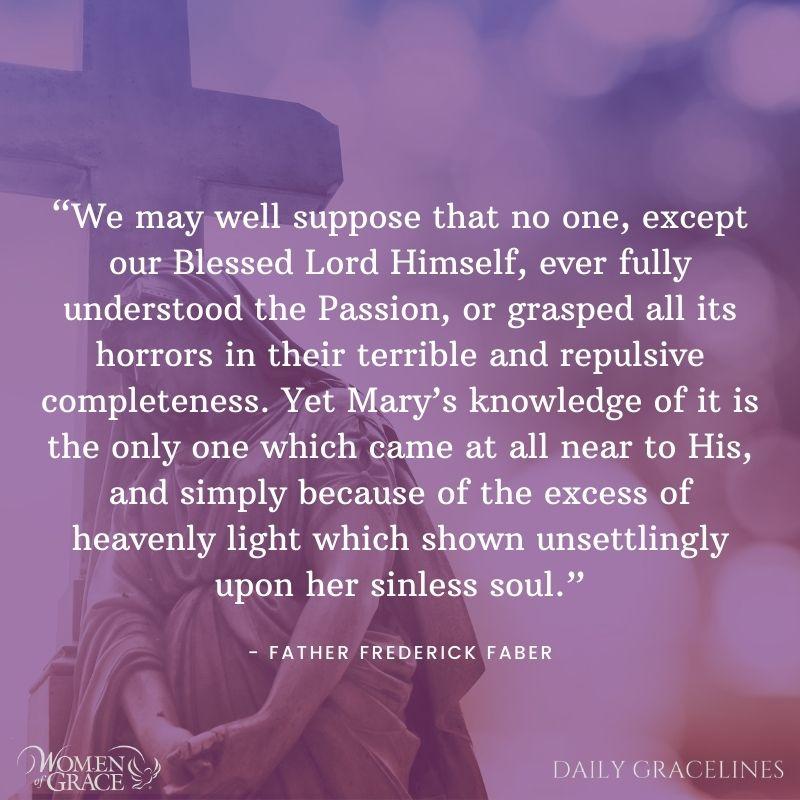
March 2
“We may well suppose that no one, except our Blessed Lord Himself, ever fully understood the Passion, or grasped all its horrors in their terrible and repulsive completeness. Yet Mary’s knowledge of it is the only one which came at all near to His, and simply because of the excess of heavenly light which shown unsettlingly upon her sinless soul.”
- Father Frederick Faber
For Reflection:
How does Father Faber’s reflection echo Father Suarez’s reflection? Envision the gaze between Jesus and Mary when they meet on the Via Dolorosa. Enter into it. What were Mary’s eyes saying to her Son? What were Jesus’ eyes saying to His mother? Journal their unspoken conversation. Now envision Our Lord and Our Lady turning to you. What do their eyes say to you? What do your eyes respond?
If you enjoy Daily Gracelines, please prayerfully consider making a donation to support and sustain our apostolate so that we may continue to provide this and all of our resources designed to nourish and grow your Catholic faith.
DONATE
Read the rest
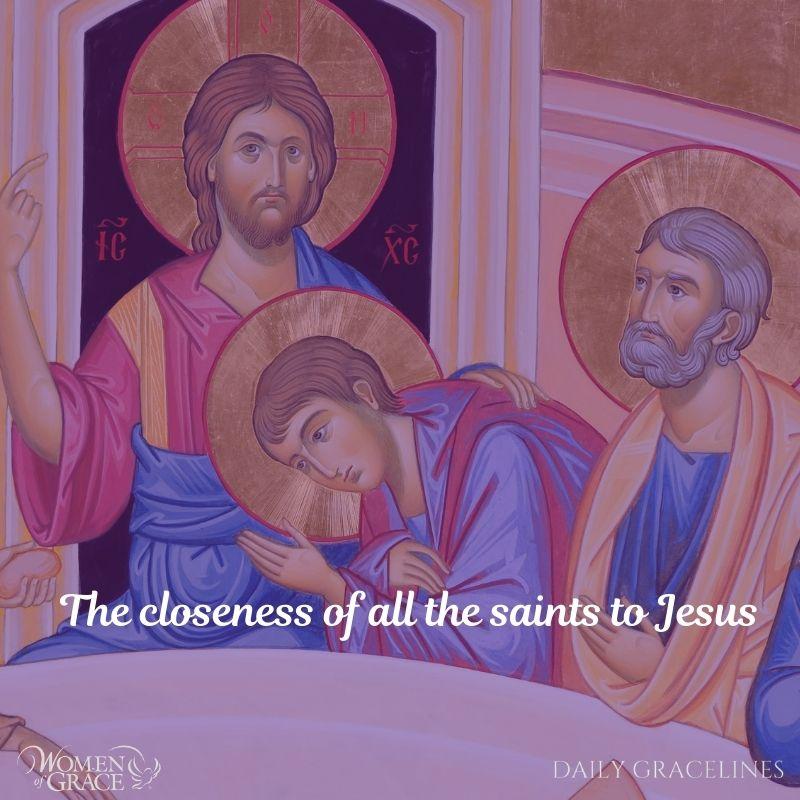
March 1
“The closeness of all the saints to Jesus in His Passion has in all cases been directly related to their degree of sanctity, and to the degree in which they possessed this divine life. The more identified they were with Christ, the more Christ lived in them, the greater was the intensity with which they could feel and participate in His Passion.”
- Federico Suarez
For Reflection:
In light of this quote, consider the fact that Mary was preserved from sin from the moment of her conception. What does this indicate about the intensity with which she could feel and participate in the Passion of her Son? With this in mind meditate again on Mary’s fourth dolor. Journal your insights and reflections.
If you enjoy Daily Gracelines, please prayerfully consider making a donation to support and sustain our apostolate so that we may continue to provide this and all of our resources designed to nourish and grow your Catholic faith.
DONATE
Read the rest
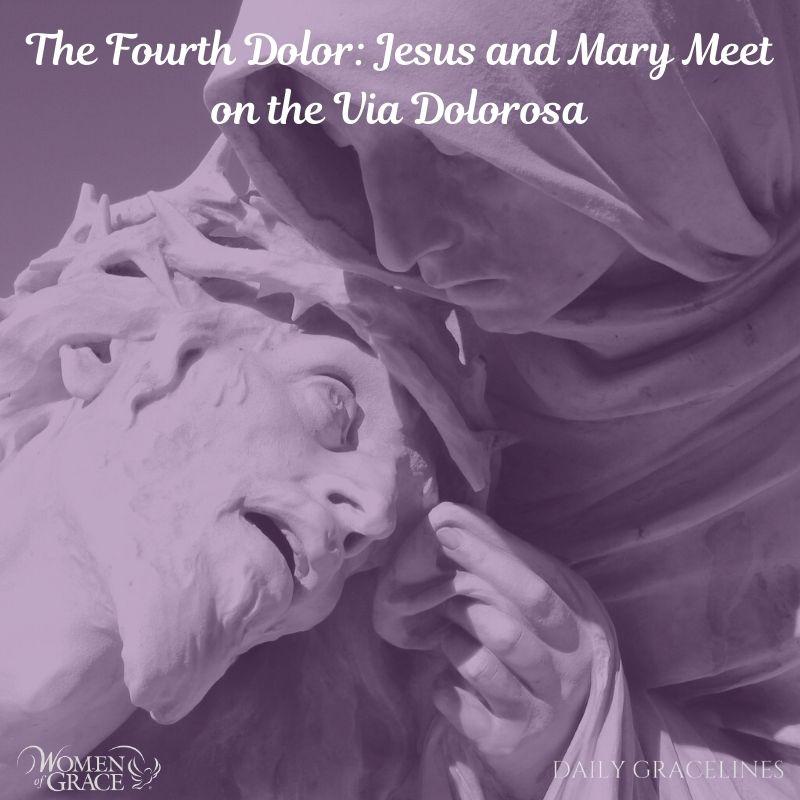
February 28
The Fourth Dolor: Jesus and Mary Meet on the Via Dolorosa
The Fourth Dolor of Our Lady’s heart is tied to the Fourth Station of the Cross. Though not supported by Sacred Scripture, early legends of the Church tell us that Mary journeyed with Jesus on the Via Dolorosa, and “swooned away for anguish of heart” when she saw Him. What must it have been like to behold her Son in such a state of suffering?
Blessed John Henry Cardinal Newman said this in his reflection on this dolor: Mary would rather have had all his sufferings herself, could that have been, than not to have known what they were by ceasing to be near him. ... He was now carrying the load of the world’s sins, and, all holy though he was, he carried the image of them on his very face. ... what a meeting of Mother and Son! Yet there was a mutual comfort, for there was a mutual sympathy.
For Reflection:
Read St. Luke’s account of The Way of the Cross (23:26-31). Picture yourself in the scene as one of the women along the way. Imagine the encounter between Mary and Jesus. Journal your thoughts, inspirations, insights, and emotions.
If you enjoy Daily Gracelines, please prayerfully consider making a donation to support and sustain our apostolate so that we may continue to provide this and all of our resources designed to nourish and grow your Catholic faith.
DONATE
Read the rest
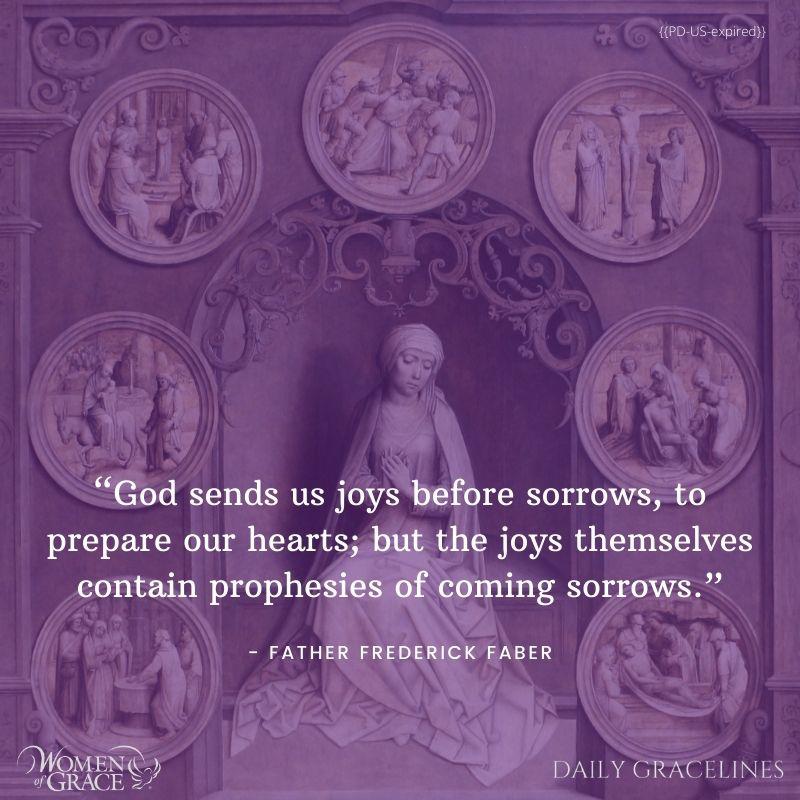
February 27
“God sends us joys before sorrows, to prepare our hearts; but the joys themselves contain prophesies of coming sorrows.”
- Father Frederick Faber
For Reflection:
Consider the main events of Mary’s life as recorded in Scripture up to this present dolor. They are the Annunciation, The Nativity, The Flight into Egypt, The Presentation, The Loss and Finding of Jesus in the Temple. What is the joy contained in each? What is the prophesy of the sorrow contained in each? For what was God preparing Mary’s heart? Do you think it could also be true that the sorrow also prepares our heart for greater joy? Why might this be the case?
If you enjoy Daily Gracelines, please prayerfully consider making a donation to support and sustain our apostolate so that we may continue to provide this and all of our resources designed to nourish and grow your Catholic faith.
DONATE
Read the rest
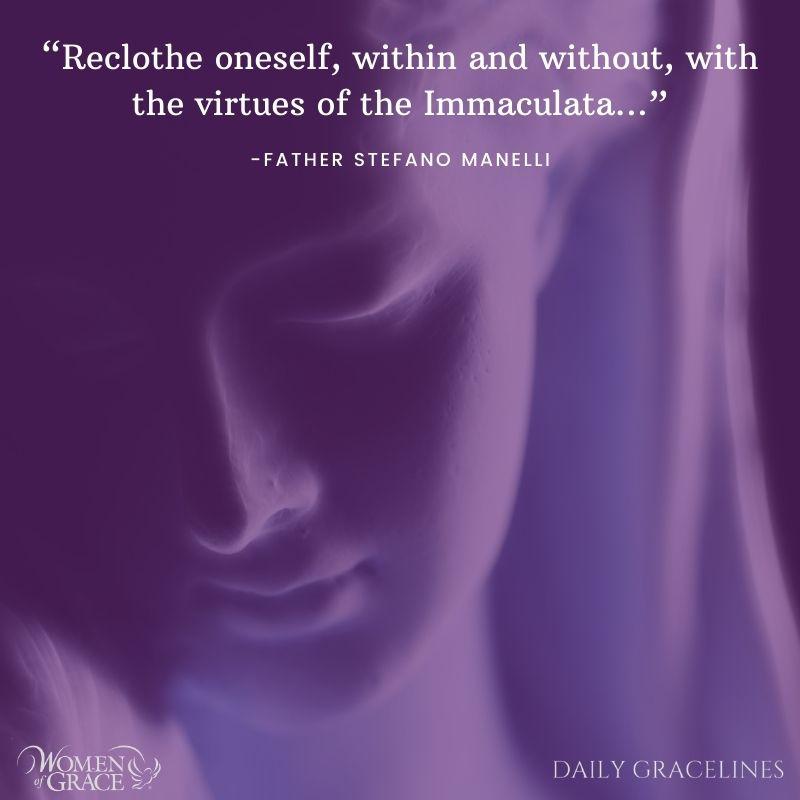
February 26
“Reclothe oneself, within and without, with the virtues of the Immaculata: the theological virtues and the cardinal virtues, the moral and the religious, so as to become as it were 'another Mary living, speaking, and working.'”
-Father Stefano Manelli
For Reflection:
Reread Luke 2: 43-52. As you read, jot down the virtues you see in Mary or think would have been necessary for her in this suffering. In what ways do you think Mary lived these virtues prior to this dolor? Which of these virtues do you most need to emulate? How can practicing them now prepare you for potential trials the future may bring? Is there one you need to exhibit now? Ask Mary to procure the grace you need to do so.
If you enjoy Daily Gracelines, please prayerfully consider making a donation to support and sustain our apostolate so that we may continue to provide this and all of our resources designed to nourish and grow your Catholic faith.
DONATE
Read the rest
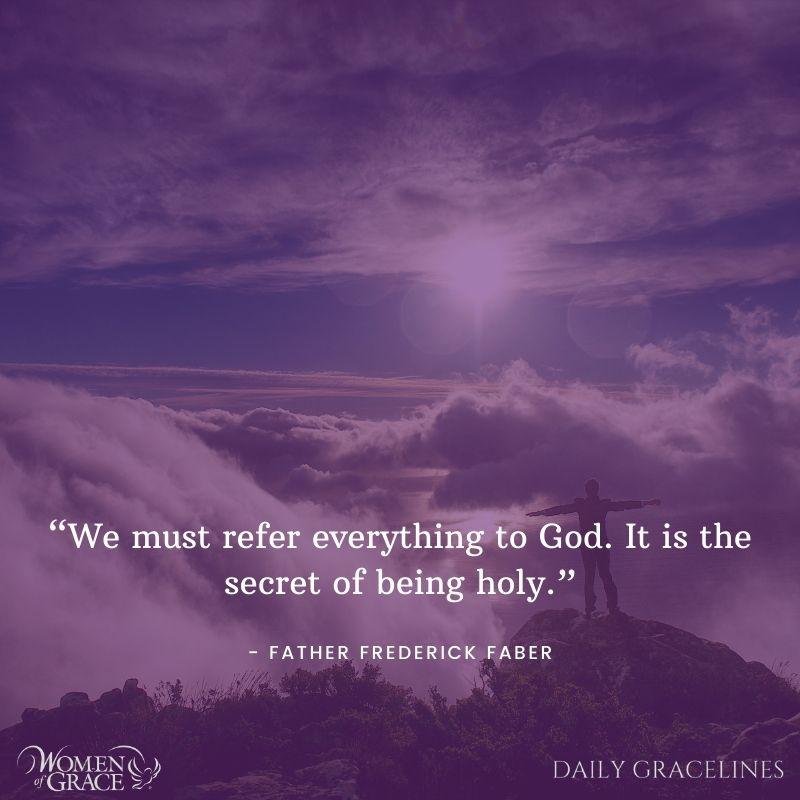
February 25
“We must refer everything to God. It is the secret of being holy.”
-Father Frederick Faber
For Reflection:
This simple quote contains a deep and provocative message. Why do you think referring everything to God is the secret of being holy? How do we see Mary referring the pain of the third dolor of her heart to the will of God? How do you seek to live the reality of this quote? What current circumstance in your life is God asking you to refer to Him? Ponder it in your heart and journal your insights.
If you enjoy Daily Gracelines, please prayerfully consider making a donation to support and sustain our apostolate so that we may continue to provide this and all of our resources designed to nourish and grow your Catholic faith.
DONATE
Read the rest
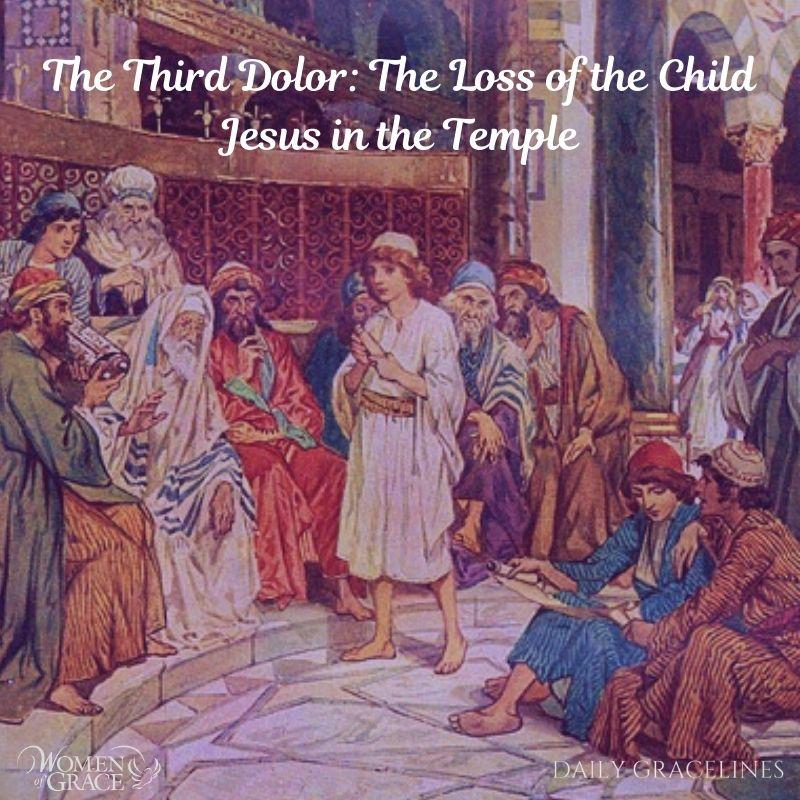
February 24
The Third Dolor: The Loss of the Child Jesus in the Temple
During the time of Jesus, it was the custom for faithful Jews to make a pilgrimage to Jerusalem for the celebration of the Passover. Nazareth, the home of the Holy Family, was approximately 60 miles away but the hilly topography added another 26 miles to the trip. Pilgrimages consisted of two groups – one comprised of men and the other of women. Children could travel with either. That is why it was not until evening that Mary and Joseph discovered Jesus was missing.
For Reflection:
Read Luke 2: 43-52. Imagine the panic Mary and Joseph must have felt when they discovered Jesus was missing and how it mounted as they searched for Him for three days. How does Mary’s interaction with Jesus at verse 48 show her concern? What word does she use to describe it? C. S. Lewis says that “Faith is the art of holding on to things your reason has accepted, in spite of your changing moods.” How does this quote apply to Our Lady at this moment? How does she demonstrate faith in spite of lack of understanding?
If you enjoy Daily Gracelines, please prayerfully consider making a donation to support and sustain our apostolate so that we may continue to provide this and all of our resources designed to nourish and grow your Catholic faith.
DONATE
Read the rest
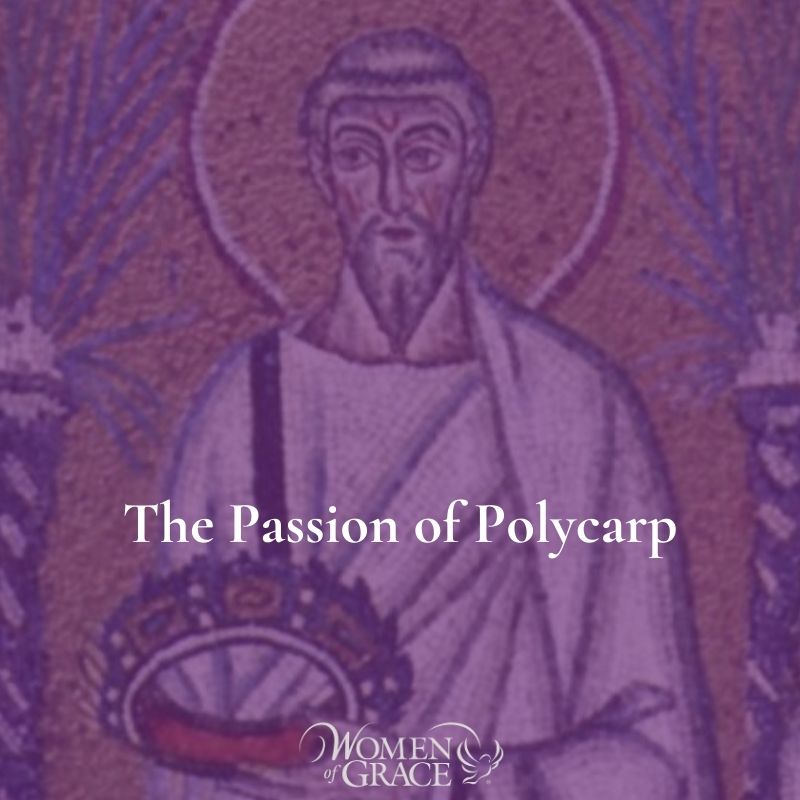
"I bless Thee, O God, for having vouchsafed to make me a partaker in the Passion of Jesus Christ Thy Son, by rendering me worthy to offer myself as a sacrifice for Thy honor that I may be enabled to praise Thee in heaven, and to bless Thee for all eternity."
Read the rest
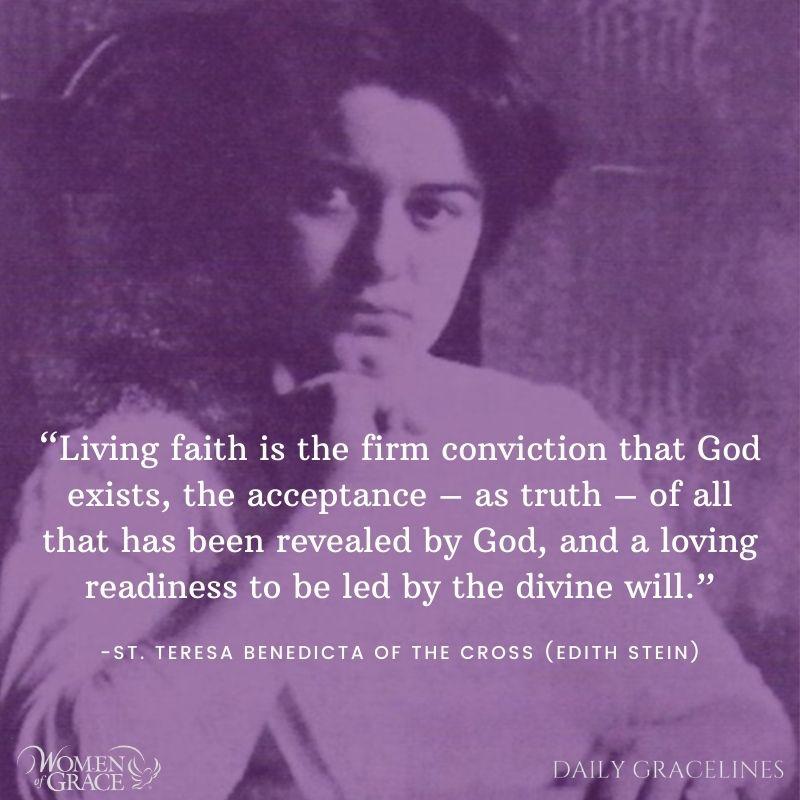
February 23
“Living faith is the firm conviction that God exists, the acceptance – as truth – of all that has been revealed by God, and a loving readiness to be led by the divine will.”
-St. Teresa Benedicta of the Cross (Edith Stein)
For Reflection:
Mary and Joseph had “living faith” according to this definition – even being led to Egypt at the direction of an angel in a dream. On a scale of 1 to 10, one being “no faith at all” and 10 being “living faith” per the above quote, where are you? Where do you want to be? What can you do today to move you one step forward?
If you enjoy Daily Gracelines, please prayerfully consider making a donation to support and sustain our apostolate so that we may continue to provide this and all of our resources designed to nourish and grow your Catholic faith.
DONATE
Read the rest
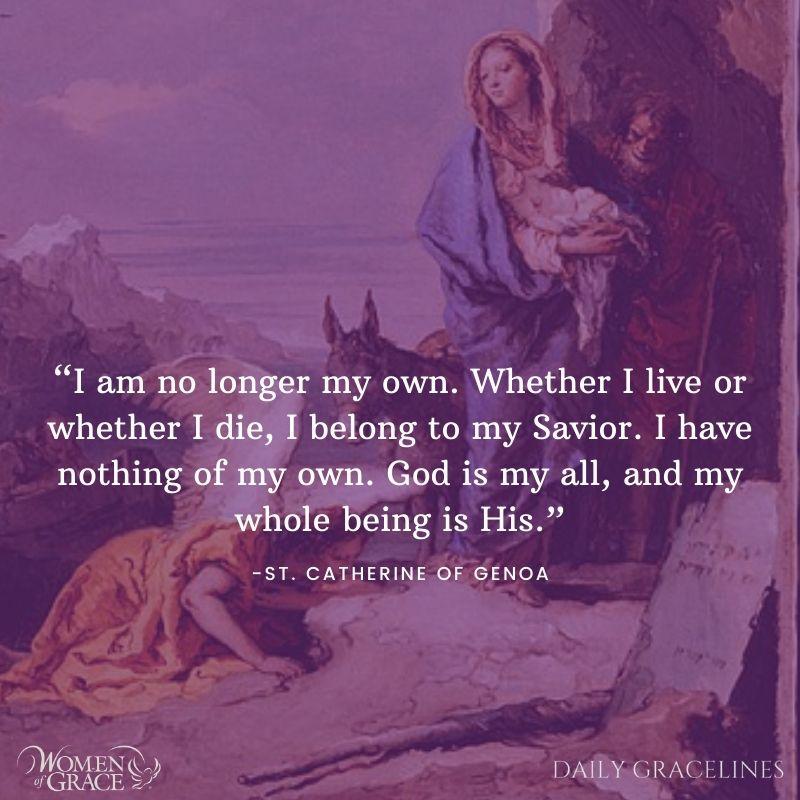
February 22
Feast of the Chair of Saint Peter, Apostle
“I am no longer my own. Whether I live or whether I die, I belong to my Savior. I have nothing of my own. God is my all, and my whole being is His.”
-St. Catherine of Genoa
For Reflection:
How do the saint’s sentiments of heart echo Our Lady’s? How does Mary exhibit this in the second dolor? In the first? To what extent can you make the same statement about yourself?
If you enjoy Daily Gracelines, please prayerfully consider making a donation to support and sustain our apostolate so that we may continue to provide this and all of our resources designed to nourish and grow your Catholic faith.
DONATE
Read the rest










